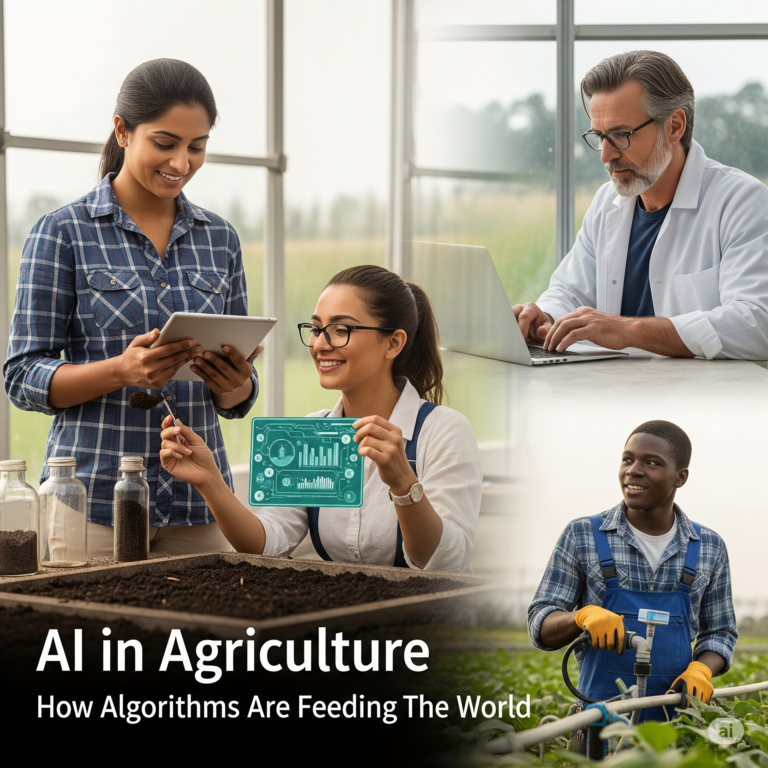- AI in Agriculture: How Algorithms Are Feeding the World
- 🌱 Introduction: Farming Is Getting Smarter — Fast
- 🤖 1. Precision Farming: Every Drop, Every Seed, Optimized
- 🛰️ 2. Drones, Satellites & Computer Vision: The Eyes of the Farm
- 🌦️ 3. Predicting the Unpredictable: AI & Weather Analytics
- 🧠 4. Smart Machines That Learn and Adapt
- 📊 5. AI in Agribusiness: From Farm to Shelf
- 🧑🌾 6. Empowering Farmers, Not Replacing Them
- ⚠️ 7. The Challenges Ahead
- ✅ Conclusion: AI Is Growing More Than Just Crops
AI in Agriculture: How Algorithms Are Feeding the World
🌱 Introduction: Farming Is Getting Smarter — Fast
When you think of agriculture, you might picture tractors, soil, and farmers working under the sun. But in 2025, agriculture is no longer just about seeds and soil — it’s about data, drones, and decisions made by algorithms.
Welcome to the new age of AI-powered farming, where machines can predict droughts, drones scan crops from the sky, and intelligent systems tell farmers exactly when, where, and how to plant.
This isn’t the future. It’s already happening.
🤖 1. Precision Farming: Every Drop, Every Seed, Optimized
Gone are the days of “spray and pray.” Today, farmers use AI algorithms and sensors to make farming incredibly precise.
AI helps:
- Analyze soil conditions in real time
- Determine exactly how much water or fertilizer is needed
- Plant seeds with surgical accuracy
- Reduce waste and increase yields
📡 Example: Using AI-powered systems, some farmers are now reducing water usage by up to 30% while boosting production.
🛰️ 2. Drones, Satellites & Computer Vision: The Eyes of the Farm
With drones and satellites constantly scanning fields, farmers now get a bird’s-eye view of every square meter of land.
AI-powered computer vision can:
- Detect plant diseases early
- Spot pests before they spread
- Identify areas suffering from drought
- Map crop health and growth in real time
🌾 Instead of walking acres on foot, farmers now get instant alerts and visuals via smartphone.
🌦️ 3. Predicting the Unpredictable: AI & Weather Analytics
One of agriculture’s greatest enemies? Unpredictable weather.
AI models analyze climate data, satellite imagery, and historical patterns to:
- Predict droughts, storms, and extreme temperatures
- Alert farmers days (or weeks) in advance
- Recommend actions to protect crops or change planting schedules
🌍 With climate change accelerating, this tech is becoming vital for food security.
🧠 4. Smart Machines That Learn and Adapt
Modern tractors, harvesters, and irrigation systems aren’t just machines — they’re intelligent systems that learn over time.
These AI-powered machines can:
- Navigate fields autonomously
- Adjust speed and power depending on crop density
- Self-diagnose maintenance issues
- Learn patterns from past harvests for future optimization
🚜 John Deere, for instance, is integrating AI into its equipment to deliver real-time farming intelligence on the go.
📊 5. AI in Agribusiness: From Farm to Shelf
AI isn’t just helping on the field — it’s revolutionizing the entire food supply chain.
Algorithms are being used to:
- Forecast food demand
- Optimize storage and transportation
- Reduce spoilage
- Track food from farm to fork
🍎 This level of traceability helps both producers and consumers understand where food comes from and how it was grown.
🧑🌾 6. Empowering Farmers, Not Replacing Them
Many worry that technology will replace farmers — but AI is actually making farmers more powerful.
With AI:
- Small-scale farmers gain access to insights once reserved for big agribusinesses
- Mobile apps powered by AI give localized advice in remote regions
- Farmers spend less time guessing and more time growing
📱 In Africa and Asia, AI tools are already helping rural farmers increase yields and combat hunger.
⚠️ 7. The Challenges Ahead
Despite all this progress, there are real challenges:
- Access to technology in low-income areas
- Data privacy and ownership concerns
- Risk of over-reliance on algorithms
- Need for strong AI ethics in agriculture
Still, governments, tech companies, and nonprofits are working to close these gaps — because feeding the future depends on it.
✅ Conclusion: AI Is Growing More Than Just Crops
Artificial intelligence is no longer a bonus tool in agriculture — it’s becoming a core part of how we grow food on a global scale. From smart seeds to intelligent supply chains, algorithms are now key players in solving the most important challenge of our time: feeding a growing world with fewer resources.
In the battle against climate change, population growth, and food insecurity, AI isn’t replacing farmers — it’s becoming their most powerful ally.
🌾 This is the new face of farming. And it’s only just beginning.


